Ah, the delicious tastes of summer—barbecued chicken hot off the grill, fresh greens, creamy macaroni salad, and yummy fruit.
But nothing stops summer fun quite like food poisoning. Yuck!
While it’s not something most of us think about a whole lot, food safety is so important, particularly during the summer months. With heat, travel, and outdoor eating, it’s a perfect breeding ground for bacteria. Those bacteria can wreak havoc on your digestive system very quickly.
For little kids with not-so-hardy immune systems, a bout of food poisoning can really take its toll. Kids can quickly become dehydrated and very ill in a short amount of time.
It’s not so pleasant to talk about, but the symptoms of food borne illness can range from slightly queasy to full out vomiting, diarrhea, and exhaustion. Food poisoning often hits quickly—within a matter of hours and the results can be well…dramatic to say the least.
The good news is, by following a few summer food safety tips and tricks, you can ensure you and your family have a happy, healthy summer—free from any sidelining macaroni salad.
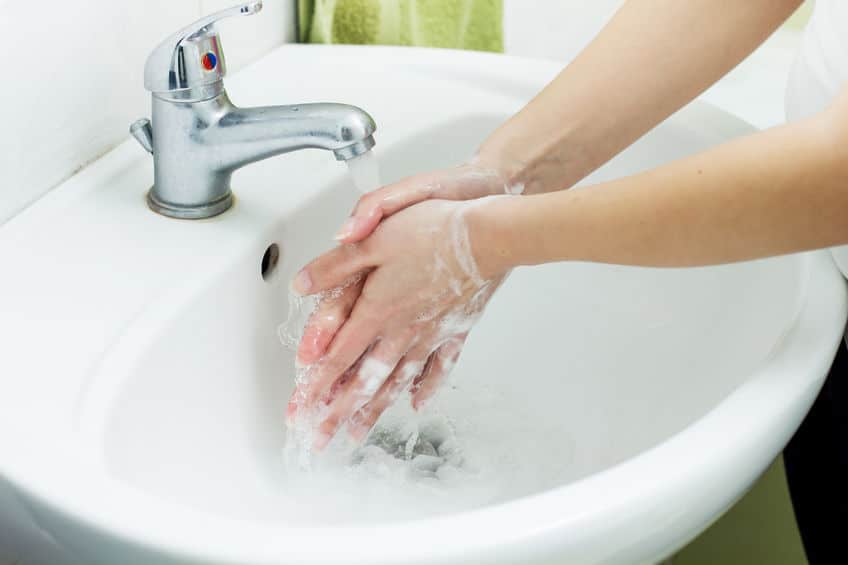
1. Wash, Wash, Wash
This sounds like a no-brainer, but so many of us forget to do it! Of course we all know to wash our hands after using the bathroom or before preparing food, but it can be a good idea to go over the pointers with kids to help everyone avoid illness. Have kids sing the ABCs while washing to ensure their hands get really clean.
Similarly, wash all food before you enjoy it. It can be tempting to eat berries right off the vine or bite into a ripe tomato, but keep in mind, even manure can be considered “organic.” Even if you aren’t worried about pesticides, it’s very smart to give everything a good rinse before you bite.
When you’re traveling, rinse and wash your produce before it goes in the cooler. When you get to your destination, you might not have access to a sink, making it impossible to clean. Be safe and wash beforehand (and store in a clean bag or container).
2. Avoid Cross-Contamination
Cross-contamination is a term for when raw food touches an item (like a platter, a spatula, or tongs) and then that same item is used for cooked food. It’s one of the biggest ways to cause big-time food poisoning.
Always get rid of any packaging or paper products that have touched raw meat, then be careful that you use a clean, fresh platter and utensils for serving. When you think about summer cookouts, it’s obvious why cross-contamination happens—juggling food on the grill and trying to cook items at different rates and times. Be extra cautious, especially with raw meat.
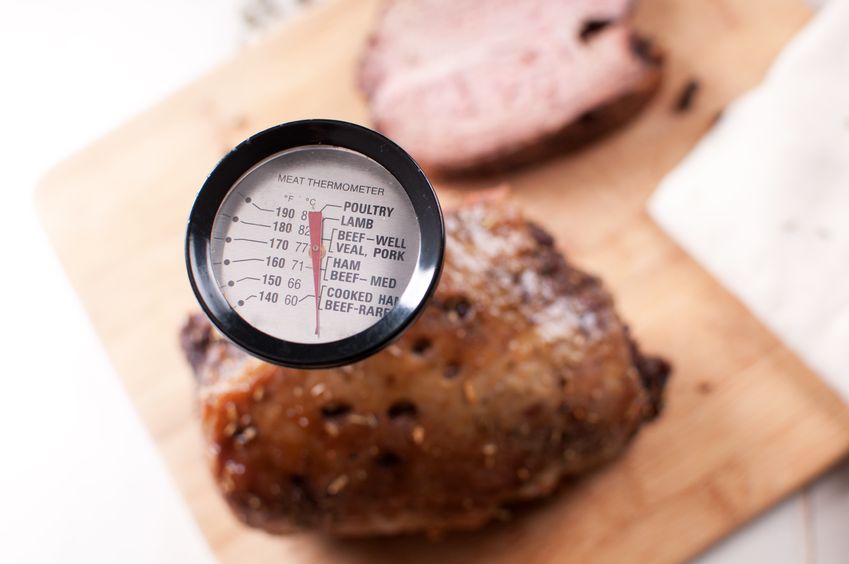
3. Use a Food Thermometer
Bacteria can reside between 40-140 degrees. Food must be stored below that point and cooked beyond that point to eliminate the possibility of any unfriendly growth. Invest in a meat thermometer so you can be certain your food is coming out safe!
For chicken and poultry, internal temperature should be somewhere around 165-170. Grilling can be deceptive because marinades and smoke can tint the meat slightly redder in color. While you don’t want to overcook your food, always test to ensure you’ve reached the right temp.
4. Avoid Blackened Food
In the last few years, new guidelines came out for blackened or burnt food, particularly on the grill. Grilling can cause carcinogens to form, making extra crispy (burnt) food not so healthy.
Similarly, avoid using lighter fluid and always use food-safe charcoal briquettes. Never ever use gasoline to light a fire (which is very unsafe in its own right), and always be careful around hot grills.
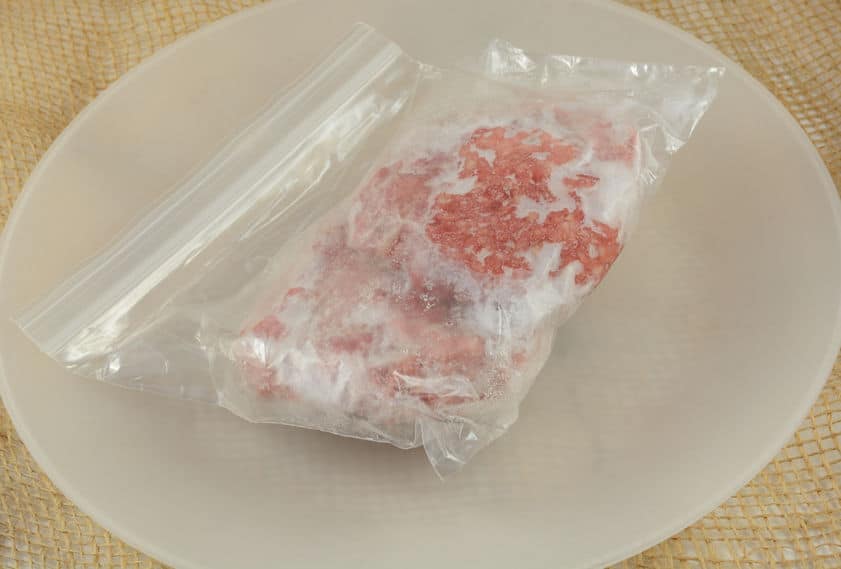
5. Don’t Let Food Sit Out
It can be tempting to defrost burgers on the counter while you’re heating up the grill. Unfortunately, this idea isn’t very safe and can lead to illness. Food should always be fully thawed in the fridge, and be sure never to leave it out longer than two hours (much less for raw meat).
While your food is cooking, store your condiments—ketchup, mustard, ranch, and mayonnaise—in the cooler. Use smaller containers for serving, so items like potato salad, beans, pasta, and other sides aren’t just sitting out in between helpings.
6. Practice Cooler & Cold Item Safety
Always use a well-insulated cooler that seals. Coolers should be filled with ice and stored in the shade. For car trips, be sure to put the cooler in the air-conditioned part of the car (rather than in the trunk, which can get hot quickly). Remember that a full cooler stays colder.
Store your beverages in a separate cooler to prevent it from heating up while it’s frequently opened and closed. For foods that need to stay cooler longer, nestle them deeply into the ice. Store items like condiments, vegetables, and less-sensitive foods on top.
If you’re storing meat in your cooler, always be sure to put it near the bottom and wrap it very carefully. Think of your cooler the same way you would store items in your fridge. It’s good practice to completely clean out and thoroughly dry your cooler each time you use it, as water and food debris can lead to mold and mildew. (Ick!)
For sack lunches, trips to the park, and car snacks, store items in an insulated lunchbox. You can keep them cold by freezing a water bottle to act as your “ice” (and a refreshing drink for your lunch).
Yogurt tubes and even applesauce can be frozen ahead and slipped into lunch bags. As they start to soften and thaw out, they’ll keep the surrounding food safe and cool. That said, avoid packing fridge-dependent items for long trips—like mayonnaise, eggs, fish, and lunch meats.
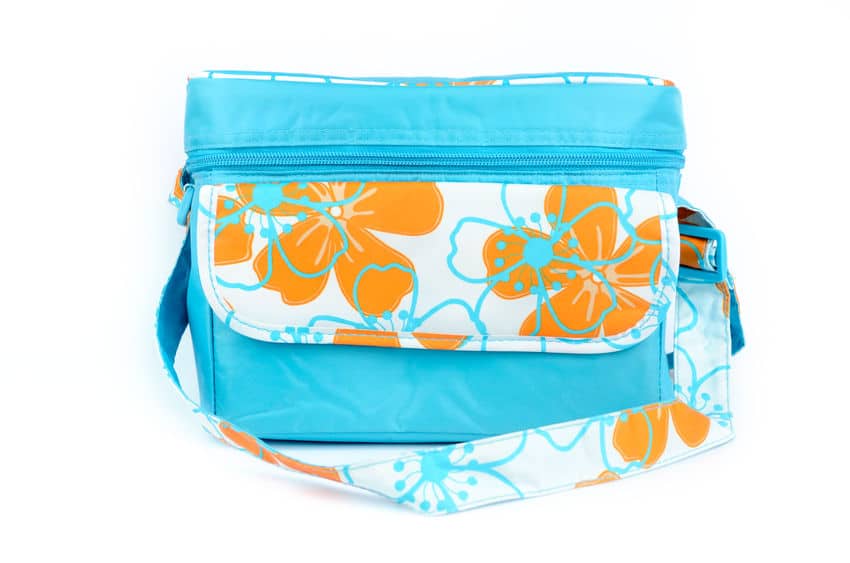
7. Keep Packaging Clean
If you use reusable grocery bags or a lunch sack, give it a wash in between uses. Often the outside packaging from the grocery store might not be clean, even if the items inside are. Drippings on the outside of a package of ground beef could get on your tote and then spread to your farmers market apples. So give them a wash each trip.
Just like washing lunch bags (and even your cooler after use) is a good idea, also wipe down outdoor tables and surfaces. We often forget that food can bump into the side of a grill or touch the top of a picnic table, and then go right into our mouths.
Similarly, divide snacks into individual packs if you have a few kids to feed. Sharing a communal bag of chips or other items means each time a hand goes in the bag, so do germs. While it might not lead to food poisoning, it could lead to passing around the cold or flu, which can be even worse in the middle of summer. If you don’t divide, always pour out items, rather than reaching in and grabbing them.
8. Help Kids Learn Safe Eating Habits
Of course food safety brings to mind food borne illness, but we often forget food safety can also mean avoiding choking hazards, frighteningly common among small children. So many summer foods are perfect choking size—hotdogs, candy, grapes, melon chunks, steak, and more. Keep kids safe by avoiding these common choking hazards.
Always cut up food into smaller-than-bite-sized pieces. It can feel a bit ridiculous to cut a grape into fourths, but for small windpipes, it can be a safety issue. Encourage your kids to eat sitting down and to chew their food slowly. Engage in conversation in between bites and model slow, deliberate eating for your kids.
Kids are often excited in the summer, so they quickly eat their food and run to the next activity. Rather than making “finishing eating” an incentive, set a certain amount of time to enjoy the meal and encourage them to slow things down. That might mean saying, “We’re going to eat lunch now and we’ll get back in the car at 12:30pm”—eliminating the mad rush to shovel in food and get to the next fun thing.
With a few tips and tricks, you can avoid any of the less-than-fun hazards of summer eating and ensure your family stays safe and healthy all summer long. Practicing food safety doesn’t mean missing out on any summer activities or saying no to macaroni salad. It simply means adopting a few simple practices to keep everyone feeling great and having fun in the sun!
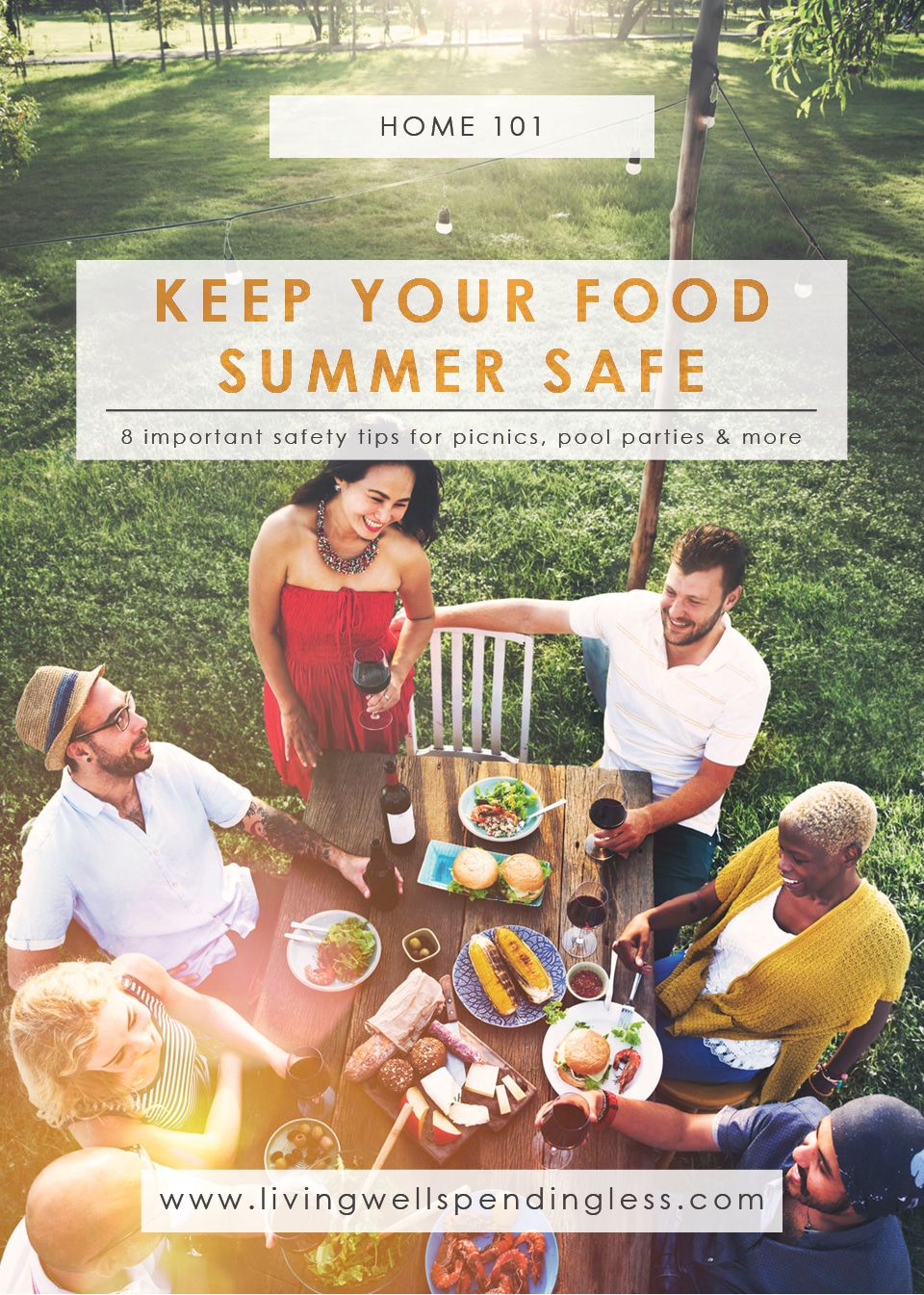
TAKE BACK CONTROL OF YOUR HOME LIFE
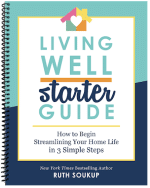 Ever feel like you just can't keep up? Our Living Well Starter Guide will show you how to start streamlining your life in just 3 simple steps. It's a game changer--get it free for a limited time!
Ever feel like you just can't keep up? Our Living Well Starter Guide will show you how to start streamlining your life in just 3 simple steps. It's a game changer--get it free for a limited time!
If you love this resource, be sure to check out our digital library of helpful tools and resources for cleaning faster, taking control of your budget, organizing your schedule, and getting food on the table easier than ever before.

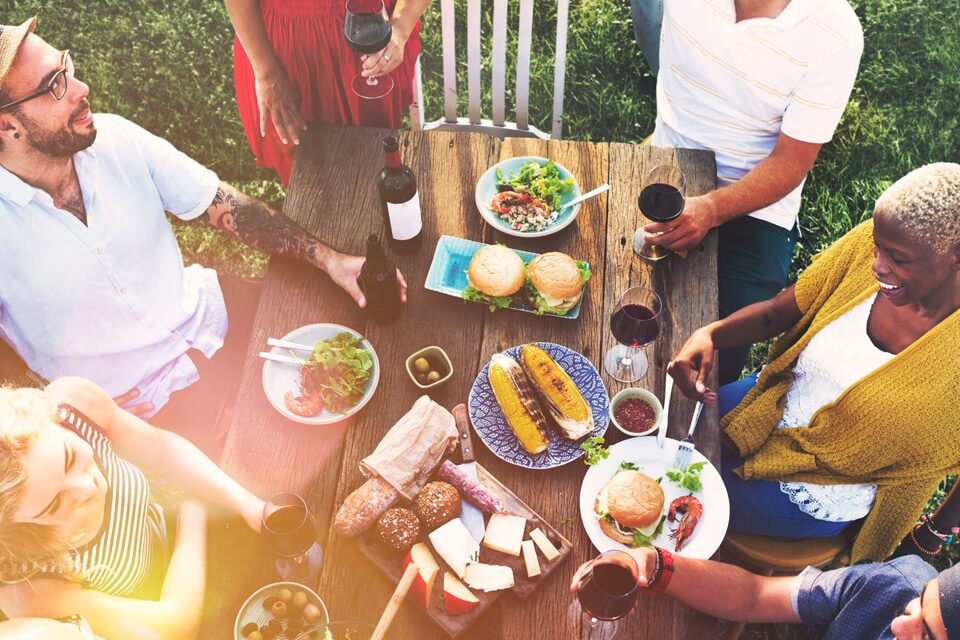
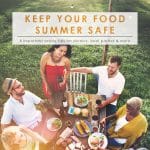

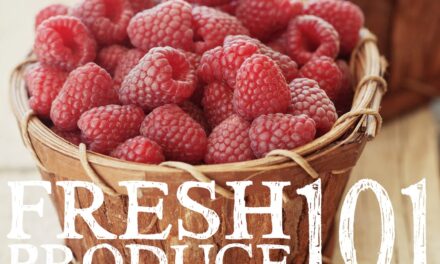

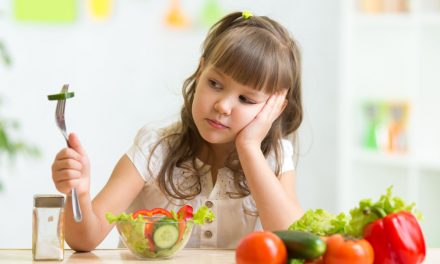
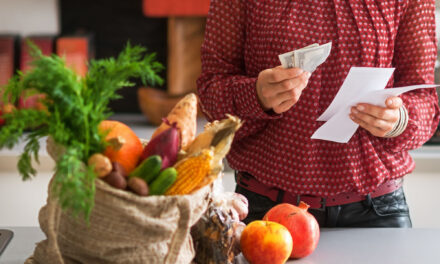

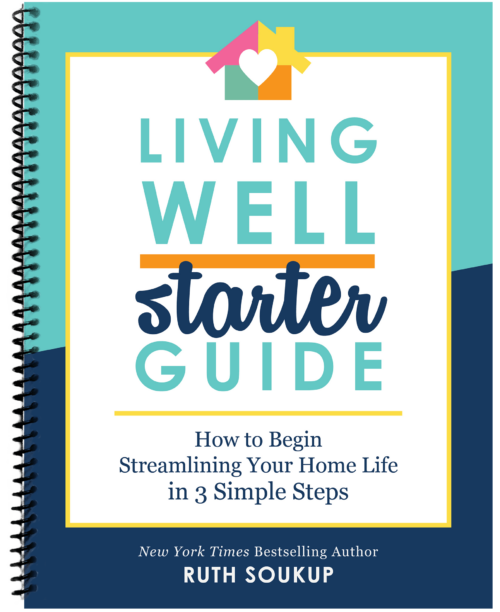

Great tips! I love picnics and grills and eating outdoors in general.
I’ve never had any problems so far, so I must be doing something right 😀 I don’t have a food thermometer though, I keep meaning to get one and keep forgetting about it.
Very cool and useful tips. I never knew some of these tricks. Gonna give it a try. Thanks
Some great points here. Never really thought about cross contamination in reusable bags. Also the burnt bits were always my favorite, will have to give them a miss from now on.
Thank all time to teach me about growing blog and I now making peprection to travel to join workshop